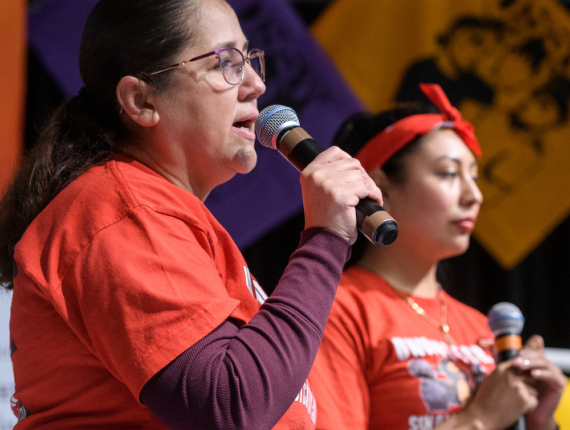By Catherine Hutchinson
California State University Employees Union (CSUEU)
The truth is, for too many students, an undergraduate degree is not the final step in an educational journey. These days, more and more jobs require a master's degree or higher, especially in fields like science and technology. That was exactly the case for me.
As a scientist, I knew I needed to pursue the next level of my education. Within three years of my undergraduate degree, I was back in school studying for a master's in Biotechnology and Bioinformatics. While some tuition assistance was available through my job as a Biology Technician at CSU-Channel Islands, I didn’t qualify. Suddenly I was faced with the hard reality of taking out student loans.
Thankfully, during my undergrad years, I was a student assistant in the financial services office, where I helped students handle loan requests and FASFA-related questions. Before taking out my own loans, I understood the associated risks and repayment programs. As a public employee, I knew that I could qualify for loan forgiveness and that options like the Income-Driven Repayment (IDR) plan could help me along the way. That plan allowed me to pay my loans but still survive and afford daily bills and needs.
When it came to my student loans, things were never straightforward. With the Public Service Loan Forgiveness (PSLF) program, I needed to make 10 years of consecutive payments for forgiveness. In 2013, during California’s wildfire season, many Californians like myself had to flee our homes. In response, payments were paused for borrowers, but I still had autopayments turned on. When my payment cleared, I was penalized. My 10 years restarted and I was effectively kicked out of the program.
Before the recent changes to the PSLF, any small issue could restart or stall your progress. A mistake or a technicality should not push borrowers into more debt, but that’s exactly what was happening. By the time my loans were forgiven, I'd been working at Cal State for 20 years, way past the 10-year point my loans should have been forgiven.

President Biden’s changes to the PSFL have already made a HUGE difference. For me, I was able to get back on track. I was forgiven of ALL my loans from my master's degree, and not only that, since I had overpaid, my overpayment was returned to me.
The Biden Administration's changes to the PSFL include:
- Qualifying any payment made by an eligible borrower, regardless of whether the payment was late or below the required amount;
- Allowing debt consolidation if a borrower has one qualifying and one non-qualifying loan, they could combine the loans to make the whole sum qualifying; and
- Allowing credit for those who worked in a qualifying public service role and made consecutive payments, even if that person no longer works in public service.
When you’re in student loan debt, you have to make choices. Can I buy a home? Can I choose to buy a new car? Can I enjoy small parts of my life like visiting my family or taking a girl's weekend with my friends? But then, suddenly, $124,000 was paid off. Loan forgiveness has changed my life!
Working people everywhere, from a fast-food worker in South Carolina to a nurse in Oregon should be able to thrive regardless of their education. For many of us, student loans were supposed to be a path forward, not something that holds us back.
When we help elect leaders who have the needs of workers and the priorities of our unions in mind, we can win. The updates to the PSFL and other new programs like the SAVE program—which will cut monthly costs, some to $0, and help ensure interest doesn’t keep borrowers in debt longer—are just two examples of how working people and leaders can work together to better the lives of everyone, not just the wealthy and powerful.



